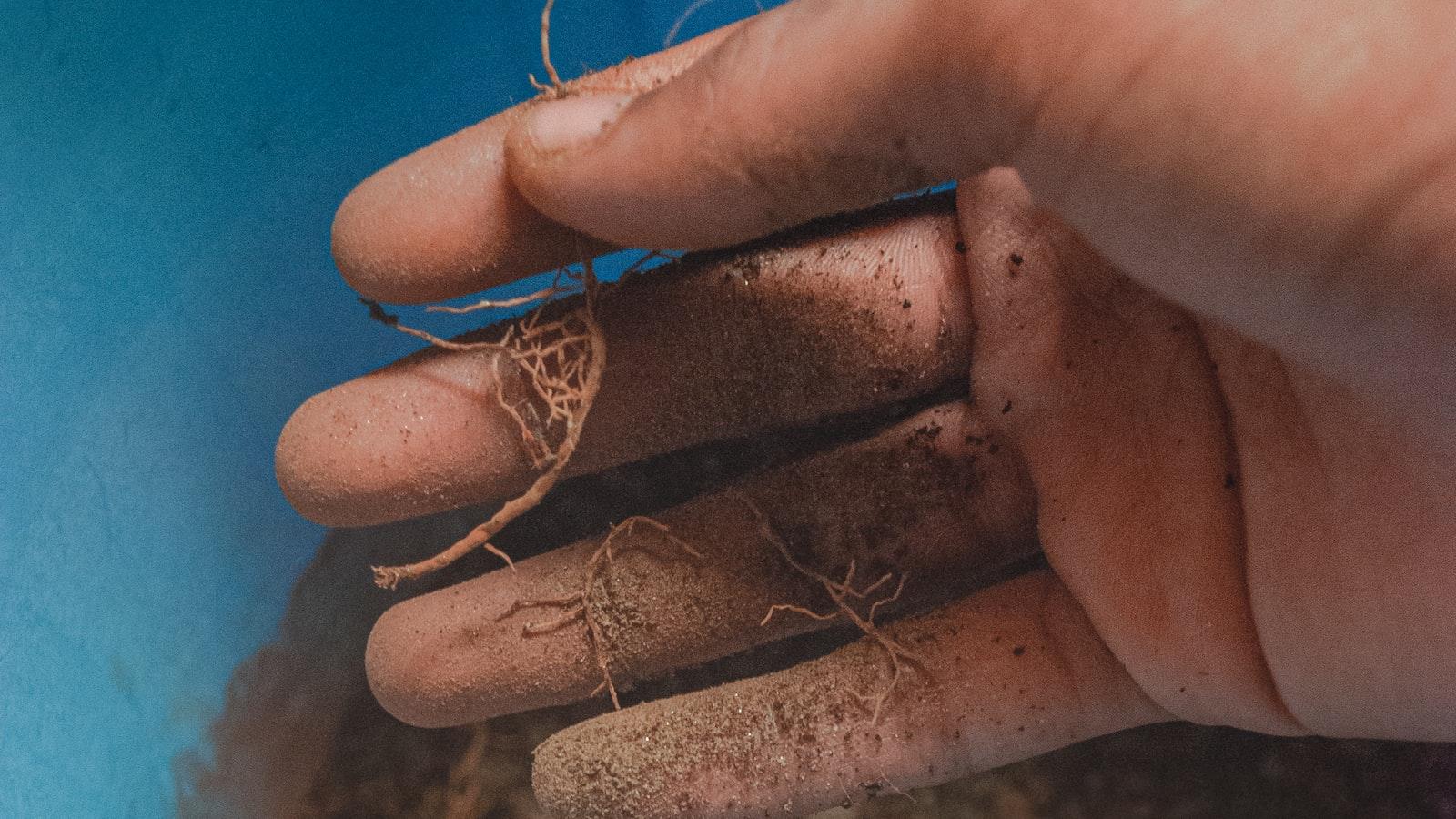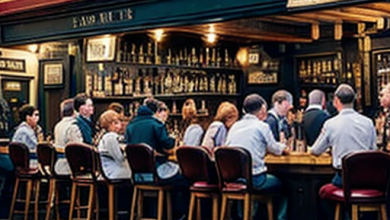From Pottage to Pies: The Tantalising Timeline of British Cuisine

Once upon a time, British cuisine was nothing more than humble pottage. Today, it is an amalgamation of mouthwatering pies, roast beef, puddings, and an array of other enticing dishes. Embark on a culinary journey through time as we explore how the simple, quintessentially British dish of pottage evolved to diverse offerings on the dining table. From hearty stews of the Medieval Ages, delicate teas of the Victorian Era, to comforting pub grub of the modern world, this tantalising timeline delves into Britain’s rich, vibrant, and sometimes surprising culinary history. From pottage to pies, delve with us into the heart –or, more appropriately, the stomach– of British history, culture, and gastronomy.

Roots from Primordial Pottage: The Humble Beginnings of British Cuisine
The culinary journey of British Cuisine began with the modest pottage, a thick soup made from oats, vegetables, and often a small amount of meat. These ingredients, once abundant on the British Isles, created a concoction which was hearty and filling, yet effortlessly simple. Pottage was economical, portable, and versatile and became the staple diet for many Britons in those early days. Its hearty nature provided sustenance for the day’s labour, while its basic ingredients reflected the available local produce.
Gradually, as Britain experienced invasion, trade and expansion, this humble diet began to diversify. There was Roman influence bringing in global flavours , mediaeval nobles contributing to the rich meaty feasts, and the discovery of the New World introducing new ingredients like potatoes and tomatoes. Meanwhile, explorations to Asia introduced an array of spices through the lucrative spice trade.
-
- Roman cuisine introduced garum, a fermented fish sauce that added flavour and depth to local dishes.
-
- Mediaeval aristocracy began to indulge in extravagant feasts, often to demonstrate their wealth and influence. These included diverse meats from pheasant to peacock.
-
- The discovery of the Americas brought the humble potato, which would become a staple in many traditional British dishes such as shepherd’s pie and fish and chips.
-
- In the 1600s, the spice trade opened up, bringing exotic additives like pepper, cardamom, and cinnamon to British kitchens.
These diverse influences began to evolve the British cuisine, transforming it from a simple pottage diet to one that now boasts a wide range of dishes and flavours. Let’s delve deeper into when and how some of our favourite British dishes came into being!

Unmasking the Era of Elegance: A Glimpse into Medieval Banquets
The Rise of British Cuisine: Unearth the medieval era when the British cuisine was just starting to develop its distinct character. It’s a common misconception that medieval food was bland and monotonous. In truth, royal banquets of the time painted a different picture, boasting a lavish spread of rich and varied dishes. The mainstay of an ordinary medieval diet may have been humble pottage, a thick soup or stew made from grains, vegetables, and possibly a small amount of meat, but at a feast, the nobility dined on a dazzling array of delicacies.
Bountiful bread baskets, generous servings of meat and fish, and a variety of pastries and pies were par for the course at these grand events. Meat pies were especially popular, often featuring the likes of venison and wild boar. Spices were used liberally, with saffron, ginger, and pepper offering an exotic touch to these dishes. Fruits often accompanied or even featured in such dishes, tart apples and berries lending a refreshing burst of flavour. Desserts were equally indulgent, laden with honey and spices.
| Typical dishes at a royal medieval banquet | Key ingredients |
|---|---|
| Meat Pies | Venison, wild boar, spices |
| Pottage | Grains, vegetables, meat |
| Fruit Pastries | Apples, berries, honey |
The Extravagance of Feasts: While common folks sustained on pottage and bread, the rich indulged in elaborate multi-course meals. A typical feast started with spiced wine and a variety of cheeses. This was followed by a serving of fish or meat, often cooked with fruits or served with a sweet-and-sour sauce. A second course featured roast meats, savory pies, and stuffed poultry, while the third course was dedicated to sweets and desserts including tarts, pastries, and marzipan sculptures.
Extravagant displays were a hallmark at these occasions. Swans were often served, their plumage reattached post-cooking for a dramatic presentation. Peacocks were not just for displaying, their meat was also savored. Even the beverages were no less remarkable. Ale was common while wine was for the upper crust of society.
| Typical course at a medieval feast | Key features |
|---|---|
| First Course | Spiced wine, varied cheeses |
| Second Course | Fish or meat, sweet-and-sour sauce, roast meats, savory pies |
| Third Course | Sweets, pastries, marzipan sculptures |

Baking History: The Evolution of the Quintessential British Pie
The journey of the British pie began in the Middle Ages, when people would bake meat in a shell of crusty dough, then discard the crust after eating the meat. This predecessor of today’s pies was more practicality than culinary strategy, but it set the foundation for an evolution that would change the face of British dinner tables forever.
In the 16th century, a subtle shift led to the use of pastry as more than just a container. Cooks started to add butter and fat to pastry dough and pies became a thing of enjoyment rather than mere utility. The tradition of stuffing pastry with chicken, beef, or vegetables has lasted till date, with the humble pie finding favour in pubs and fancy restaurants alike.
-
- The Victorian era saw pies grow in complexity, featuring both sweet and savoury fillings
-
- The 20th century welcomed a wave of convenience, with the advent of the Fray Bentos tinned pies
-
- Modern pies celebrate both aesthetics and taste, with creative lattice crusts to serve both purposes
| Century | Pie Evolution |
|---|---|
| 16th | Introduction of butter and fat to pastry dough |
| 19th | Complex pie fillings including sweet and savoury |
| 20th | Convenience pies in tins |
| 21st | Creative pie crust designs and diverse fillings, vegetarian and vegan options |

Modernising Traditions: The Rise and Relevance of Contemporary British Cuisine
From its humble origins of pottage and pies, British cuisine has journeyed through time, imbibing diverse influences along the way and blending them with homegrown styles and techniques. It might be surprising to think that an island nation known for its simple, hearty fare has been the crucible of culinary revolution. However, the evolution of its food culture, the blend of its past traditions, and the inclusion of contemporary techniques and global elements have given rise to a brand new avatar of modern British Cuisine.
This new gastronomical renaissance has resulted due to several historical and cultural influences. Here are a few worth noting:
-
- Colonialism and the empire that led to a plethora of spices, fruits, and grain being introduced into British cuisine.
-
- The industrial revolution bringing forward changes in animal husbandry and farming techniques.
-
- Immigrant cultures and their tastes influencing the palates of Britain.
| Historical Period | Noteworthy Culinary Influence |
|---|---|
| Viking invasion (8th to 10th century) | Introduction of smoking and drying methods of preservation. |
| Victorian Era (1837-1901) | Invention of the sandwich and afternoon tea tradition. |
| Modern Age (1950s onwards) | Influence of international cuisines, rise in vegetarian and vegan food options. |
The relevance of modern British cuisine lies not just in the exquisiteness of its presentation or the sophistication in its preparation but most importantly its philosophy – a philosophy of marrying the rustic with the gourmet, the homely with the novel, and the aim to strike a balance between innovation and tradition. It’s a representation of taking traditional ingredients, ideas or recipes, and reinventing them to create dishes that are familiar yet novel.
Today, British cuisine is more than just fish and chips or roast beef; it is a smorgasbord of flavours, styles, and techniques that offer a delectable gastronomy spectre, making it a global culinary hotspot. This modern culinary approach that embraces the past and incorporates the future is not only an ode to the continuity of the country’s gastronomic tradition but also the spirit of reinvention that defines contemporary British cuisine.
In Summary
From humble potages simmering in rudimentary cook pots, through the royal banquets replete with sugar sculptures, and finally, the aroma of a freshly baked steak-and-kidney pie wafting through a cosy British pub - culinary history in Britain has been nothing short of a thrilling banquet. As we put down our cutleries at the finish of this tantalising timeline, it’s clear that British cuisine is a majestic tapestry, a melting pot of culinary traditions that records not just the evolution of taste, but also the march of time. Let us keep roasting, baking, steeping and frying as we continue our unending gastronomic journey, adding more layers to this versatile heritage. So, here’s to the countless meals yet to be shared, the countless stories yet to be heard, and the joy of celebrating the beautiful potpourri – that is British cuisine. Missing any of the dishes we have travelled past, fear not, the delicious, heartwarming legacy from pottage to pies, awaits your indulgence; it’s all just a kitchen away. Enjoy!



